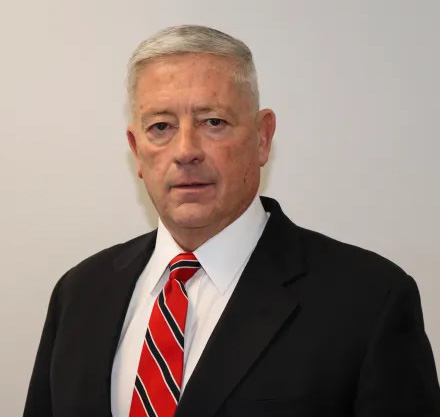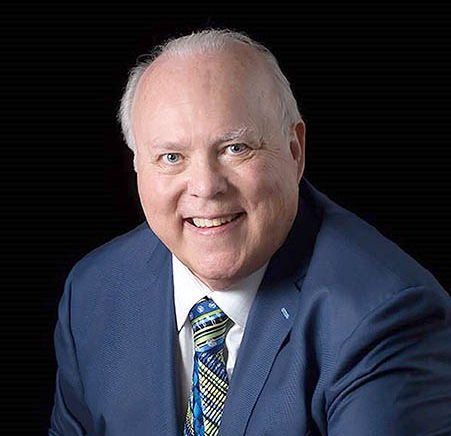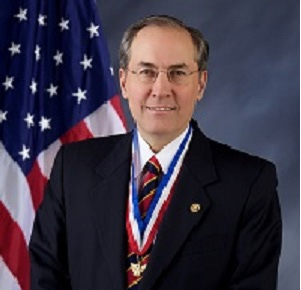The Boy Scouts of America has established the following guidelines for a safe and quality camping experience. Fundamental guiding principles for camping:
- Supervision of camping activities must include qualified, registered, adult leadership.
- At a minimum, one leader present is current in Hazardous Weather Training for all unit types. It is recommended that all leaders complete this training every two years.
- At a minimum, Cub Scout Packs, Webelos dens and Arrow of Light dens / patrols who camp overnight must have a BALOO trained leader present. BALOO is recommended for all Cub Scout leaders who go camping with Cub Scouts.
- Local council approval is needed for unit-coordinated overnight camping activities involving other units not chartered by the same organization. Units that wish to host events involving other units that do not share the same charter partner must have approval from their council. This includes events for packs, troops, crews, and ships from the same council; neighboring councils; the same territory; or other territory.
- Activities must be age- and skill-appropriate for all participants.
- Youth who are not registered in the unit may not accompany parents or siblings in camping programs of Scouts BSA*, Venturing, and Sea Scouting.
- For example, siblings who are not registered in the specific troop may not attend Scouts BSA troop campouts as part of a “family camp”. Youth who are not registered in the unit may not accompany parents or siblings in camping programs of Scouts BSA*, Venturing, and Sea Scouting.
- For council coordinated overnight camping, NCAP standards for short- or long-term camps must be met as minimum safety and quality standards.
Additional program-centric requirements and limitations to camping may also exist. These are introduced in training modules required of unit leaders and specified in other sections of the Guide to Safe Scouting.
*See Guidelines for Arrow of Light Scouts Camping Overnight with Scouts BSA below.
Additional Guidelines Specifically for Cub Scout Unit-Coordinated Camping
- Cub Scout camping is a family-centric program.
- Cub Scout camping is limited to their council’s designated locations with appropriate facilities.
- Councils use Pack Overnight Campout Site Appraisal Form (www.scouting.org/wp-content/uploads/2018/07/430-90218-PackOvernightForm_Fillable.pdf) to review and designate locations.
- Units can request from their council a site appraisal but cannot do their own appraisal.
- Cub Scout pack unit coordinated camping is limited to no more than two consecutive nights.
- Cub Scout youth may tent with a parent or guardian and siblings as outlined in Scouting’s Barriers to Abuse.
- As with all Scouting activities, Lion Cub Scouts and Tiger Cub Scouts must have their adult partner present to take part in overnight camping.
- For all other ranks: only in exceptional circumstances, a Cub Scout whose parent or legal guardian cannot attend a unit overnight camping trip may participate under the supervision of another registered adult member in Scouting who is a parent of a Cub Scout who is also attending. The unit leader and a parent or legal guardian must agree to the arrangement, and all Youth Protection policies apply. At no time may another adult accept responsibility for more than one additional “nonfamily member” youth.
Webelos and Arrow of Light Camping Additional Guidelines
Effective June 1, 2024, Webelos is the designated program for 4th graders and Arrow of Light is the designated program for 5th graders. As such, the Arrow of Light program is no longer combined with the Webelos program and the purpose of Webelos (4th grade) is no longer to prepare Cub Scouts to join Scouts BSA. The purpose of the Arrow of Light program is to prepare for Arrow of Light Scouts to join a Scouts BSA troop.
- Only Webelos Scout dens and Arrow of Light dens/patrols may conduct den coordinated overnight campouts. Webelos Scout dens and Arrow of Light dens/ patrols coordinated overnight campouts are restricted to no more than two consecutive nights.
- Webelos den or Arrow of Light den/patrol coordinated camping is only for the youth members of those dens/patrols, their parents, and their registered adult leadership.
- Webelos den and Arrow of Light den/ patrol coordinated campout must have a BALOO trained adult leader in attendance and all of Scouting’s Youth Protection policies apply. Reminder – Cub Scout overnight camping is limited to their council’s designated locations with appropriate facilities.
- During Webelos Scout dens and Arrow of Light den/patrol camping, each Scout should attend with their parent(s) or legal guardian(s). A Webelos Scout or Arrow of Light Scout whose parent or legal guardian cannot attend a Webelos den or Arrow of Light patrol overnight camping trip may participate under the supervision of at least two registered leaders. The leaders and a parent or legal guardian must agree to the arrangement, and all Youth Protection policies apply.
- Webelos Scouts and Webelos Scout dens may not participate at a Scouts BSA troop unit campout or at a Scouts BSA “camporee” or other events designed for Scouts BSA during the day and/or overnight, even as visitors.
* Guidelines for Arrow of Light Scouts Camping Overnight with Scouts BSA
- Arrow of Light Scouts can participate and camp at a unit coordinated campout with a Scouts BSA troop they are eligible to join. They must attend as an Arrow of Light den/patrol under the supervision of two deep leadership from their Arrow of Light den/patrol or pack. All Cub Scout camping requirements still apply, including the Arrow of Light den/patrol must have a BALOO trained adult leader in attendance and all of Scouting’s Youth Protection policies apply.
- Arrow of Light Scouts may participate at a Scouts BSA “camporee” (council coordinated, short-term camp, see NCAP SA-001) during the day and/or overnight in one of two ways:
- With their Arrow of Light Den/Patrol. Arrow of Light Scouts can attend as an Arrow of Light den/patrol under the supervision of two deep leadership from their Arrow of Light den/patrol or pack. The Arrow of Light Scout’s parent or legal guardian(s) may attend with the Arrow of Light den/patrol and their child, either alongside the two-deep leadership or as part of it if they are registered with the pack. Or
- As an Individual Scout. Arrow of Light Scouts can attend with their parent(s) or legal guardian(s) if the local council coordinates two deep leadership per NCAP Standard HS-502.
Hazard Trees
Hazard trees are dead trees, live trees with dead parts, and live trees that are unstable due to defects and are within striking distance of people or property.
Here are some tips to prevent a hazard tree from affecting your event:
- Assess your site. Look up, look down, and look all around when parking a vehicle, hiking on the trail or selecting a campsite.
- Avoid campsites with hazard trees. Dead trees and dead limbs may fall at any time. Trees without needles, bark, or limbs may indicate structural defects.
- If a campsite has hazard trees but must be used, be sure that all tents, chairs, hammocks, and work areas are outside the trees’ failure zone or fall radius. The fall radius on flat ground is 1½ times the height of the tree or tree part that could fail. Sloping ground could increase the danger zone.
- Don’t use dead trees, hazard trees, or other unstable objects to support tents, canopies, or hammocks.
- Check the environment constantly for changes, including the weather, as storms can increase the likelihood of trees or parts of trees falling.
Lightning Risk Reduction
In many parts of the country, Scouting activities in the outdoors will be at risk to thunderstorms and lightning strike potential. In a thunderstorm, there is no risk-free location outside.
First, to be prepared for your outdoor adventure, it is important to know the weather patterns of the area. Weather patterns on the Florida coast differ greatly from the mountains of New Mexico and the lakes of Minnesota or the rivers of West Virginia. In addition to patterns, monitor current weather forecasts and conditions of the area you plan to visit to modify your plans if needed.
The National Weather Service recommends that when the “Thunder Roars, Go Indoors! The only completely safe action is to get inside a safe building or vehicle.” When a safe building or vehicle is nearby, the best risk-reduction technique is to get to it as soon as possible. Move quickly when you:
- First hear thunder,
- See lightning, or
- Observe dark, threatening clouds developing overhead.
Stay inside until 30 minutes after you hear the last rumble of thunder before resuming outdoor activities.
Shelter—two forms:
- Safe Building—one that is fully enclosed with a roof, walls, and floor, and has plumbing or wiring. Examples of safe buildings include a home, school, church, hotel, office building, or shopping center.
- Safe Vehicle—any fully enclosed, metal-topped vehicle such as a hard-topped car, minivan, bus, truck, etc. If you drive into a thunderstorm, slow down and use extra caution. If possible, pull off the road into a safe area. Do NOT leave the vehicle during a thunderstorm.
Risk Reduction (when no safe building or vehicle is nearby):
- If camping, hiking, etc., far from a safe vehicle or building, avoid open fields, the top of a hill, or a ridge top.
- Spread your group out 100 feet from each other if possible.
- Stay away from tall, isolated trees; flag poles; totem poles; or other tall objects. If you are in a forest, stay near a lower stand of trees.
- If you are camping in an open area, set up camp in a valley, ravine, or other low area, but avoid flood-prone areas. Remember, a tent offers NO protection from lighting.
- Stay away from water, wet items (such as ropes), and metal objects (such as fences and poles). Water and metal are excellent conductors of electricity.
- If boating and you cannot get back to land to a safe building or vehicle:
On a small boat, drop anchor and get as low as possible. Large boats with cabins, especially those with lightning protection systems properly installed, or metal marine vessels offer a safer but not risk-free environment. Remember to stay inside the cabin and away from any metal surfaces.
If lightning strikes, be prepared to administer CPR (cardiopulmonary resuscitation) so that you can tend to lightning victims quickly (they do not hold an electrical charge). Take anyone who is a victim of a lightning strike or near-strike to the nearest medical facility as soon as possible, even if the person appears to be unharmed.
For additional information on lightning and weather services, visit www.noaa.gov.




